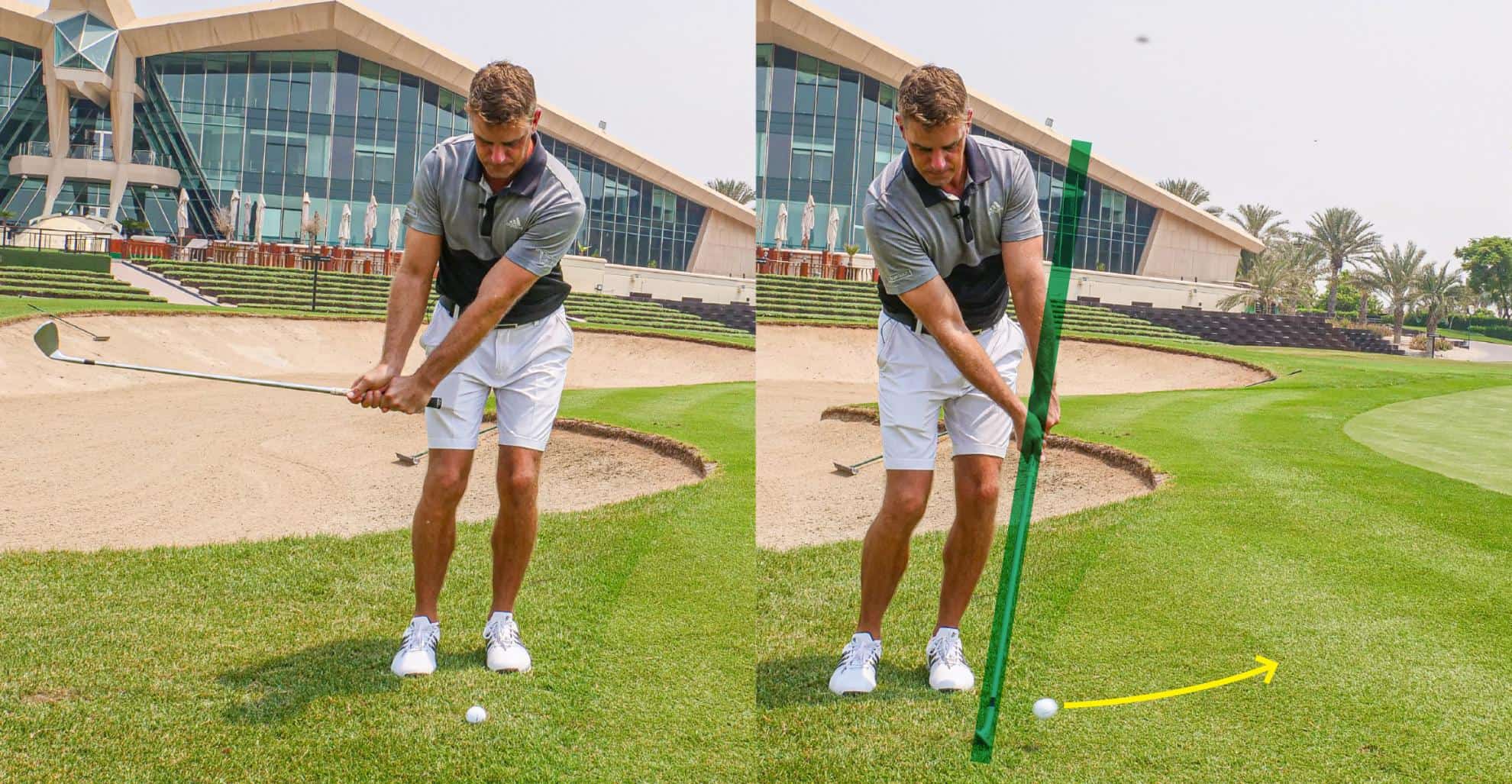The next time you find yourself on the practice chipping green, try experimenting with the ‘Hinge and Hold’ and the ‘Linear or U shaped method’. It will add versatility to your short game toolbox and save valuable strokes on your scorecard.
BUT FIRST AN ANATOMY LESSON…

The leading edge (or dig) – is the front part of the club and has a tendency to dig.
The trailing edge – the difference in the angle between the trailing edge and the leading edge is the bounce. Bounce helps the club glide through sand and grass.
Sole – the yellow area represents the sole of the club. Different grinds and designs of soles allow for different shot making.
SHOT 1:
THE HINGE AND HOLD:

The hinge and hold method has a tendency to:
- Promote the leading edge as the main point of turf contact.
- De-loft the club.
- Add a steeper angle of attack into the ball.
- Increase spin.
You can see from the pictures there is slightly more wrist hinge going back, and a retention of that hinge or “hold” on the follow through. The hands stay firm and lead the follow through.
This is ideal for:
- Hardpan or firm ground.
- Lower, high spin shots around the green.
- Deep rough.
Less than ideal for:
- Chipping into the grain.
- Muddy areas.
- Lofted shots.
SHOT 2:
LINEAR OR U SHAPED METHOD:

- The linear or U shaped method has a tendency to:
- Promote the bounce of the club so that the sole is brushing the grass rather digging.
- Maximise the loft of the club.
- Promote a shallower, less aggressive angle of attack to the ball.
You can see from the photos that there is a wider arm swing with less wrist hinge and the follow through is promoting a release whereby the club is allowed to pass the hands.
This is ideal for:
Grainy lies where the club should not be digging into the turf.
Soft and spongy grass.
Higher lofted and softer spinning shots.
Less than ideal for:
- Hardpan lies and firm ground.
- Lower shots that require more spin.
- Long grass.
The next time you find yourself on the practice chipping green, try experimenting with the ‘Hinge and Hold’ and the ‘Linear or U shaped method’. It will add versatility to your short game toolbox and save valuable strokes on your scorecard.





